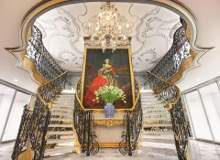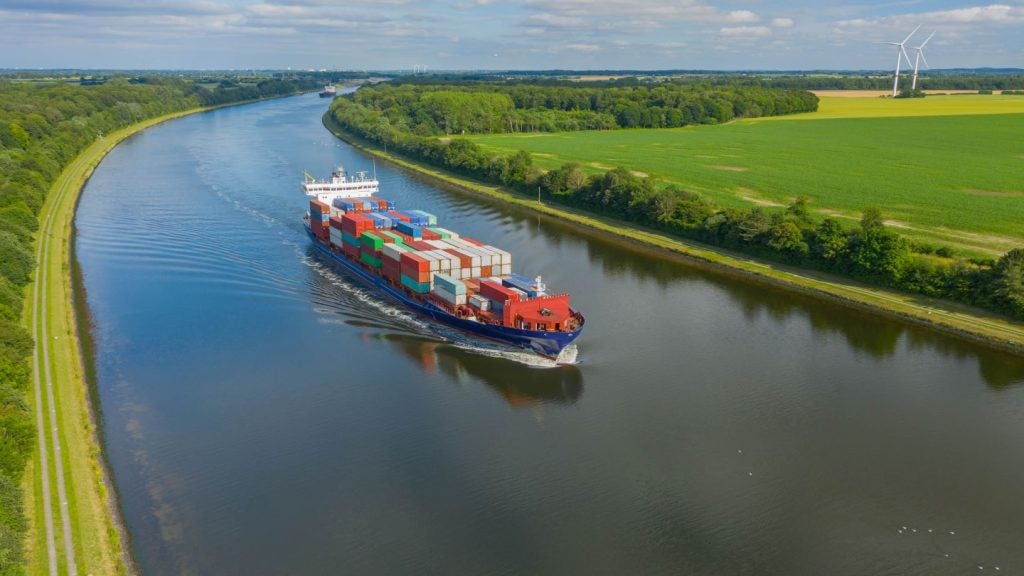

In August, Australian customs officers seized 95kg of cocaine from the Sea Princess in Sydney, following a joint operation. The stash had a street value of approximately $30m, and was quite rightly viewed as a success for the customs and security officials involved.
The drugs were hidden in suitcases, found with the help of sniffer dogs, and the Australian Border Force’s Tim Fitzgerald, regional commander New South Wales, was quoted by ABC News as saying: “We had a similar situation last year…but this is the largest. This particular cruise ship – because of the nature and the amount of ports it had been to – was considered quite high risk in itself.”
Smuggling on this scale is not endemic, but as Fitzgerald alludes to, it is also not a completely isolated incident.
Identifying the smugglers
In January 2011, the UK’s Serious Organised Crime Agency (SOCA) – now part of the National Crime Agency (NCA) – and Border Agency warned that drug traffickers were targeting cruise liners to smuggle cocaine from the Caribbean and South America to Europe.
See Also:
There was evidence, they stated, that criminals were placing drug couriers on board and attempting to corrupt crew. SOCA’s then chief executive, Brad Jones, said: “By warning the cruise and travel industries of potential signs of criminal exploitation, we can stop ships from being an attractive form of ready-made transportation for drug traffickers.”
How well do you really know your competitors?
Access the most comprehensive Company Profiles on the market, powered by GlobalData. Save hours of research. Gain competitive edge.

Thank you!
Your download email will arrive shortly
Not ready to buy yet? Download a free sample
We are confident about the unique quality of our Company Profiles. However, we want you to make the most beneficial decision for your business, so we offer a free sample that you can download by submitting the below form
By GlobalDataA year earlier, in May 2010, a group of passengers tried to transport 35kg of cocaine on the MSC Orchestra. They were stopped when UK Border Agency officials searched cabins and found a type of bodysuit that can be worn under outer clothing to conceal drugs.
That same year, two Spanish men were jailed for 12 years each after their attempt to smuggle 33kg of cocaine through Southampton, after boarding the Black Watch cruise liner in Peru, was foiled.
In the US in June this year, four women were charged with conspiracy to import cocaine on a ship that docked in Port Canaveral, while investigators claimed in 2015 that the Costa Concordia – which tragically sank in 2012 – was being used to transport drugs for the Mafia.
A small selection, maybe, but still enough to warrant the attention of customs and security officials, as well as cruise liners. In a statement, the Cruise Lines International Association (CLIA), the largest cruise industry trade association, said: “Cruise ships operate in a controlled environment where all passengers, crew, carry-on baggage and luggage must be screened prior to boarding.
“Additionally, cruise lines coordinate closely with national and international security and law enforcement authorities around the globe to help ensure passenger security. Providing for the safety and security of passengers and crew is the industry’s top priority.”
Princess Cruises, the operator of the Sea Princess, also says its security staff is highly trained and “closely cooperates with government agencies, customs, immigration and police services worldwide”.
It added in a statement: “As a matter of course, however, all passengers, crew and their luggage are screened for dangerous and illegal items using a variety of methods including X-ray, magnetometer, K-9, and trained security personnel. Because this [the Sea Princess seizure] is a matter currently before the Australian courts we cannot comment further.”
Screening without disrupting
Screening is obviously one of the most effective frontline methods of detecting contraband. However, cruise passengers, much like those at airports, do not want to be unduly delayed or inconvenienced by check after check.
Gerry Northwood is the chief operating officer of Maritime Asset Security and Training (MAST), and has worked in all areas of maritime security, including as commander of the UK Counter-Piracy Task Group. He believes that “the sheer number of passengers” presents challenges that require “very thorough, systematic processes”.
"Of course, it's not just the passengers, but also crew members,” he says. “And the number of opportunities that people have, including when the vessel is at anchor. I think it's a question of where the threat might come from. The threat is a combination of opportunity and intent.”
Limiting these opportunities requires the aforementioned collaboration and physical security, as well as telling passengers that banned items will be removed if found on a person or in luggage.
The International Maritime Organization (IMO) also has a substantial document of guidelines to prevent smuggling, but increasingly more operators are using more advanced methods than the customary body scanner.
Software development company Digital Barriers operates worldwide, providing real-time video feeds on vessels and what they claim is the next step in mass screening at terminals. Its ThruVis technology is “not a body scanner”, says Jonathan James, the company’s sales manager, but rather “a camera that is completely passive”. James adds: “By that I mean, nothing is coming out of it, it simply receives low energy waves, which are naturally produced by all objects and people.
“If you were looking at me and I had come off a cruise ship, you'd see me as a fuzzy, white silhouette. But, if I had a body vest with heroin or cocaine strapped to my chest, you would see that a dark shape.” Stopping those who intend to take alcohol on board is also part of this.
James says the technology is about the size of a desktop PC and can be moved based on intelligence reports – in the terminal, on the ship, or even behind things such as advertising panels. He is not willing to divulge information about specific seizures of smuggled goods, but “it has resulted in a number of seizures of contraband, genuine detection”.
People are exploring new ways to get contraband across borders, he warns, and although “we're not a silver bullet, we can give customs and cruise security the intelligence on concealed threats”.
Weapons: a growing threat?
While examples of weapons smuggling on cruises are thankfully extremely rare, it is accepted that the world is in a period of instability, as tensions rise in many regions. It goes without saying that weapons of any kind are banned, but Northwood says the industry has to keep a close watch.
“What we are seeing around the world now is lots of capability and the intent to use that capability and cause harm,” he says. “In the cruise industry, people will want to look very carefully at those evolving threats and what that might mean for them. If it's not drugs it could be something else, and worse.”
James also believes that “in light of events in the last 12 months, the threat profile has moved – it's about protecting people coming into crowded places”.
Northwood says one of his principal worry areas is the Middle East, where “you need to be on your guard and ensure the right measures are in place to protect the vessel and its people”.
This plays into a bigger point on universal, high-quality security. While it’s safe to assume that prevention at Southampton or another big European cruise terminal is fairly robust, with constant conversation flowing between those on the ground and intelligence chiefs, can the same be said for every destination on a ship’s itinerary?
As the CLIA confirms, liners do work with “security and law enforcement authorities around the globe”, but Northwood is honest in his assessment: “One of the things that has not been done well is the achievement of very good security in all ports and terminals. There are opportunities for people to be able to smuggle things onto ships, and use them as a means to get them from A to B.”
It’s a warning that should not be dismissed lightly. Any inclination that the industry is a soft target, or at least one that has holes in security, is music to smugglers’ ears and threatens the very DNA of cruising.




